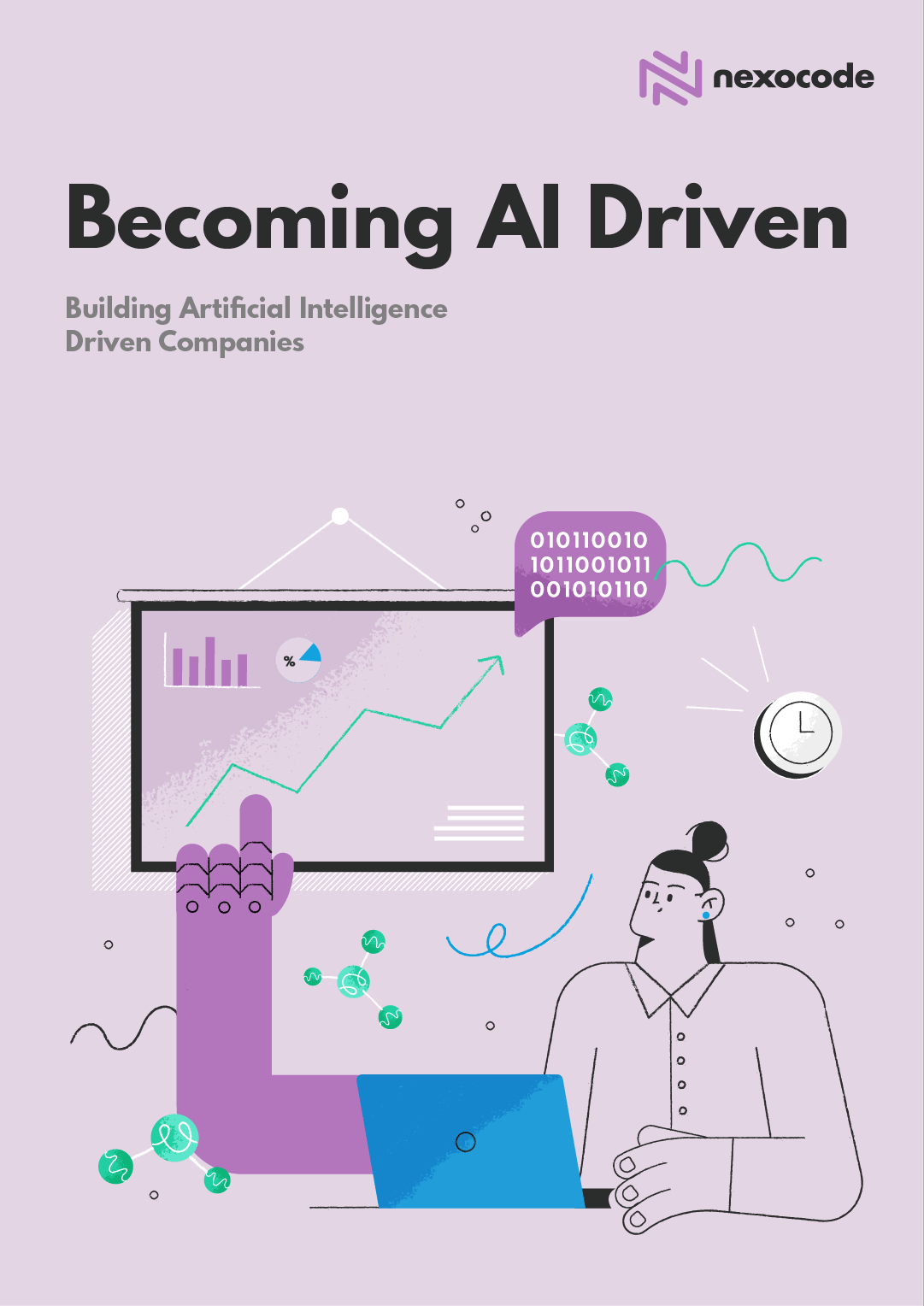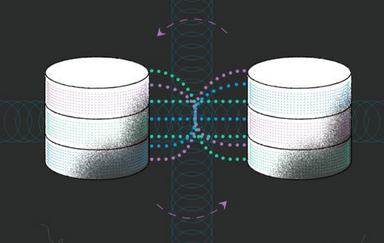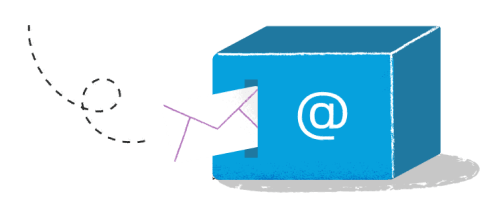Data is rapidly becoming one of the most valuable assets of modern businesses. In order to stay competitive, organizations need to have a clear strategy for collecting, managing, and analyzing their data. That is where a data strategy framework comes in.
A data strategy framework provides a comprehensive approach to managing data, from defining business goals and objectives to implementing supporting technology. In this article, we’ll explore the key components of a data strategy plan and why it is essential for organizations looking to build a data-driven future.
We will discuss how a top-down approach of a data strategy framework that starts with business goals and objectives followed by defining strategic use cases can contribute to the success of a data strategy. We’ll also explore the importance of change management and ongoing maintenance in ensuring the longevity of the framework.
Whether you’re just starting out on your data strategy journey or looking to refine your existing strategy, this article will provide a blueprint for success in crafting a data strategy framework.
TL;DR
• A data strategy framework is essential for managing data effectively, making data-driven decisions, and driving growth. It offers increased visibility, greater efficiency, enhanced security, improved customer experience, deepened knowledge, regulatory compliance, and modernization of processes.
• Begin with a top-down approach to define the data objectives for your organization. Outline a vision, set goals, and identify strategic use cases. Establish data requirements, implement data governance policies and data security solutions, and design the data architecture and supporting technology.
• Create a step-by-step plan for executing the data strategy. Assign roles, anticipate impact and risks, and include a regular review process for measuring success and making improvements.
• Develop training strategies and communication plans to support team members and stakeholders in adopting data-driven decision-making (like building data literacy, using data visualization tools, or self-serviced extracting valuable data insights). Encourage feedback and reward data-driven decisions.
• Appoint a chief data officer and data team, monitor performance metrics, and review your data strategies periodically. Stay up-to-date with emerging trends and technologies in data management.
• If you need help crafting a data strategy for your business,
contact nexocode data engineering experts for guidance and support.
Building a Data-Driven Future – Why Your Organization Needs a Data Strategy
Data ought to be the lifeblood of any modern enterprise. It is essential for powering
data-driven decision-making across the business, from marketing and sales to finance and operations.
An enterprise data strategy framework lays the groundwork for these companies to certify that their data is collected, managed, and analyzed in a meaningful and secure manner. At its core, a data strategy plan entails crafting data-based business objectives, best practices, and data governance structures that facilitate data-driven decision-making.
A plan of this kind also details the ways in which technology may be used to obtain enterprise data, how it has to be stored and analyzed, and who will be responsible for its management.
It is hence a holistic approach to enterprise data management and analytics that gives organizations the wherewithal to better decipher their data landscapes and the wide range of data-driven opportunities available to them. The bottom line is that a data strategy framework encourages the crafting of strategic data initiatives to drive business success.
The Benefits of a Data Strategy Plan
Putting in place an enterprise data strategy framework allows you to better manage data and make data-driven decisions that support business growth. The knock-on effects of this are the many advantages of implementing an effective data strategy, which will now be studied in more detail, that explain why your organization must have one prepared.
Increased Visibility
Having better access to enterprise data enables businesses to make more informed choices regarding their strategy and operations. With a data strategy plan in place, you can begin to identify patterns and trends that are otherwise hidden.
This kind of visibility allows you to assess and optimize your organizational processes, anticipate customer needs, identify potential risks and opportunities, and ultimately make decisions that are supported by business intelligence instead of guesswork or gut feelings.
Greater Efficiency
Putting a data strategy framework in place streamlines processes and eliminates the necessity for completing manual tasks associated with data management. It also facilitates the automation of data-driven tasks, such as data analysis and reporting.
Not having to carry out such processes manually saves time and money, not to mention provides more accurate results. Automation is also an essential part of any data strategy plan, since it increases the efficiency of data-driven operations and thus allows businesses to focus on more value-adding activities.
Enhanced Data Security
Since data breaches can be costly and damaging to both businesses and their customers, it is paramount that data is stored, handled, and analyzed securely. And it is a data strategy plan that provides the framework for implementing the necessary measures to secure enterprise data.
This includes ensuring that proper controls are in place to protect data from unauthorized access, as well as establishing data policies for staff members that outline the use of data and grants access according to assigned permission levels based on role or seniority, etc.
Improved Customer Experience
Granting access to data across all departments of a business is one way to go about gaining an understanding of its clients and consequently being able to better identify and meet or even exceed their needs and wants. These kinds of insights can be put towards creating experiences that are more personalized and tailored to individual customer preferences.
Knowledge of your customers is crucial to delivering a good customer experience that builds trust and loyalty, which translates into greater customer lifetime value in the long run. This is only really possible if data-driven techniques are utilized, and a data strategy plan enables businesses to do that by providing the framework for integrating customer feedback into data-driven operations.
Deepened Knowledge
When you know how data flows between different departments, such as finance (where more defensive data actions are taken) to sales and marketing (which rather conducts offensive, customer-focused business functions), it allows for a broader understanding of operations to emerge.
The positive consequences of this include, but are certainly not limited to, preventing the development of data silos and permitting the discovery of novel ways to boost revenue, profitability, and diminish risk.
A data strategy plan, ergo, provides the foundation for organizations to gain familiarity with the multiple business units within their operations and be more agile when responding to changes in the market. With an in-depth grasp of their business, they can develop competitive strategies that will make them stand out from their rivals.
Compliance with Regulations
Following a data strategy safeguards against any potential legal ramifications resulting from the mishandling of customer data. Setting up and following the right protocols all but guarantees compliance with data privacy regulations such as the EU’s General Data Protection Regulation (GDPR) and the California Consumer Privacy Act (CCPA).
There is also the Health Insurance Portability and Accountability Act (HIPAA) in the US that safeguards information related to health care. Complying with such regulations is often necessary to conduct business and crucial to maintain customer trust, as doing so adequately protects all data subjects and prevents their rights to privacy from being violated.
Modernization of Processes
Data strategy plans contribute to streamlining data-driven operations by introducing the latest technologies. For example, leveraging the power of big data, artificial intelligence (AI), and machine learning (ML) applications to automate processes or augment decision-making saves time, effort, and also money in many cases on performing manual repetitive tasks.
AI technology is also used for predictive analytics, which allows businesses to anticipate customer needs and wants, as well as any changes in trends and the economic landscape, thereby further giving them a competitive edge.
A data strategy plan facilitates such modernization of processes by providing the necessary road map for introducing new technological advancements, among many other implementations.
Data Strategy Framework
The establishment of an effective data plan necessitates a meticulous understanding of your data and analytics needs. Only then can one begin to design a business strategy around data that takes into account the different aspects of your entire organization.
Top-Down Approach: Vision, Goals, Objectives
Crafting an effective data strategy framework will ideally start with a data and analytics concept that defines the data objectives for the organization and provide the basis for goal setting. Taking a top-down approach to data strategy allows you to consider the bigger picture and set measurable objectives that align with your business goals.
Outline a vision that highlights the benefits of implementing a clear data strategy plan in your business, some of which have been covered above, to swiftly gain the approval of senior management, business leaders, IT teams, and other key stakeholders.
As well as the business objectives you intend to meet, your proposal may include the predicted financial upsides, a competitor analysis, and a suggested timeline for the successful execution of the project to phase in the data strategy and eventually bring about an organizational shift toward a data-driven culture within the company.
Defining Strategic Use Cases
Once the goals have been set, you’ll need to figure out how to achieve them by looking across the data landscape in all directions. This is where some examples of strategic use come in, providing clear and concise descriptions of the data-driven tasks that your organization will be undertaking.
For instance, how about using customer data in order to understand their interests and preferences and then designing an automated marketing campaign that targets these clients with personalized offers? Or, you could use your data to gain insights into customer churn and subsequently implement strategies to reduce the rate.
Data Requirements
Establish the type and volume of data you will gather, the various sources (e.g., in-house, outsourced, or purchased) and formats, and what and how they will be stored.
You must also determine quality requirements. That is, understand the types of data cleaning and transformations you will need to perform for your data to be useful.
After you have categorized your list of data requirements, you can expand on their attributes and characteristics in detail accordingly. For example, are you looking for quantitative or qualitative insights, is the data longitudinal (i.e., collected sequentially over time), do you rely on any outside data sources, and which variables depend on another?
Data Governance
Protocols for data usage, access, and protection within your entire organization are essential components of any data strategy plan. Data governance verifies that the data is only being used in appropriate ways and by authorized personnel, as well as that it remains secure from threats such as unauthorized access or malicious attacks.
Create data governance policies that not only outline who has access to the data, but also how and when it can be used and which compliance regulations you must adhere to when collecting, storing, and processing data. GDPR, CCPA, and HIPAA are just a few such regulations that you might have to factor in when handling customer data.
Data Architecture and Supporting Technology
All components of your data infrastructure have to fit together and work as one cohesive system, so outline the elements that you will need for raw data collection, storage, processing, analysis, and visualization.
You will also need to consider the technology solutions that are required to make it all work, such as data warehouses, databases, analytics tools, or cloud-computing services.
Identification of proper tools and technologies necessitates a review of your existing data architecture, analysis of data that is currently used by different teams, and identification of any data gaps. This process will confirm (or not) that your data can be easily accessed, shared, and acted upon by any who needs and has the permission to do so.
Implementation Roadmap
Bringing everything together in a data strategy plan requires a step-by-step implementation blueprint. Start by estimating the duration of the project in order to best allocate resources and determine a timeline for completion, then assign roles to your team members – who will manage the data, who will analyze it, etc.
Also outline the anticipated impact of the data strategy plan, as well as any potential risks and how you will address them should they arise. Finally, include a review process to be undertaken at regular intervals that enables you to measure the success of your data strategy and make any improvements if necessary.
Change Management
It is imperative that you take action to prepare, support, and assist team members and stakeholders in making an organizational shift regarding data. To that end, develop training strategies and communication to raise awareness of the changes to everyone involved and create a data literacy program to inform them about the power and potential of data.
Include a plan for training and onboarding staff, as well as how to introduce new data sources and technologies that may be required down the road. Encourage data-driven decision-making, and check that everyone has the right tools and resources to be able to draw actionable insights from data.
Finally, consider how feedback will be collected from team members and stakeholders throughout the entire process in order to make adjustments in a timely and effective manner, plus come up with a system to reward data-driven decisions.
Implementing and Maintaining the Data Strategy Framework
To be successful, a data strategy blueprint must be more than just an idea on paper or screen – it needs to be put into practice and sustained if it is to reach its full potential and drive business strategy outcomes. Start by introducing the plan in phases, and documenting any changes that are made along the way.
Managing the Project
In cooperation with senior executives, a budget must be established and a project timeline created so that the data strategy can be put into as smoothly and efficiently as possible. A project manager then has to be appointed with the responsibility for tracking progress, maintaining the timeline, and liaising with the stakeholders.
Appointing a Data Team
Your team is also critical to the success of the data strategy framework. As such, identifying individuals who bring forth a variety of backgrounds, thoughts, and perspectives is a vital component of the overall plan.
Daily, they will be in charge of tasks such as allocating and distributing resources, handling any issues that occur, implementing new technologies, verifying compliance with guidelines, and reporting updates.
Unless specifically hired experts in the field, the staff that brings into your data team will almost certainly require training and onboarding to bring them up to speed on the data strategy roadmap and their roles within it.
Moreover, a chief data officer (CDO) must be appointed to oversee data governance, compliance, and the overall progress of the data program. Other key positions to fill include data stewards and data scientists, who will be responsible for managing and reporting on the data. Among other duties.
Monitoring and Reviewing
Once everything is in place, it is essential to monitor data analytics and performance metrics on a regular basis. This will enable you to detect any issues that may arise and address them quickly.
On top of this, it is crucial to review the data strategy plan periodically, establishing new policies and improving existing ones as needed based on new business objectives or changing data regulations.
Staying up to Date
Finally, it is worth putting in the time and effort to research and understand emerging data management trends, technologies, and best practices. Doing so will be of great assistance in navigating the ever-evolving landscape of data and analytics, meaning you can stay ahead of the curve and let your data strategy flourish.
Navigating the Data Management Landscape
Developing an effective data and analytics strategy framework is a complex process, but the rewards can be enormous. Properly preparing and planning your approach does, however, enable you to create a data strategy plan for your organization to fully leverage the power of data in order to drive meaningful outcomes and bring success for years to come.
Establishing a data strategy roadmap that meets your organization’s specific needs results in your data being securely collected, stored, managed, analyzed, and interpreted. This leads to increased efficiency and facilitates timely, informed, and actionable decision-making that prepares your organization to capitalize on opportunities in a data-driven world.
Whether you are just starting out or refining an existing data strategy, comprehending and following the steps highlighted in this article will contribute to your business meeting its data-based objectives and getting all stakeholders on board. This, in turn, can lead to an organizational shift toward data and analytics maturity.
Begin today by leveraging
nexocode’s knowledge and experience to develop and execute a data strategy plan that is comprehensive and tailored to your business. Our experts will work with you every step of the way to unlock the true potential of data-driven insights so that your organization can reap the benefits of an effective data strategy framework.









